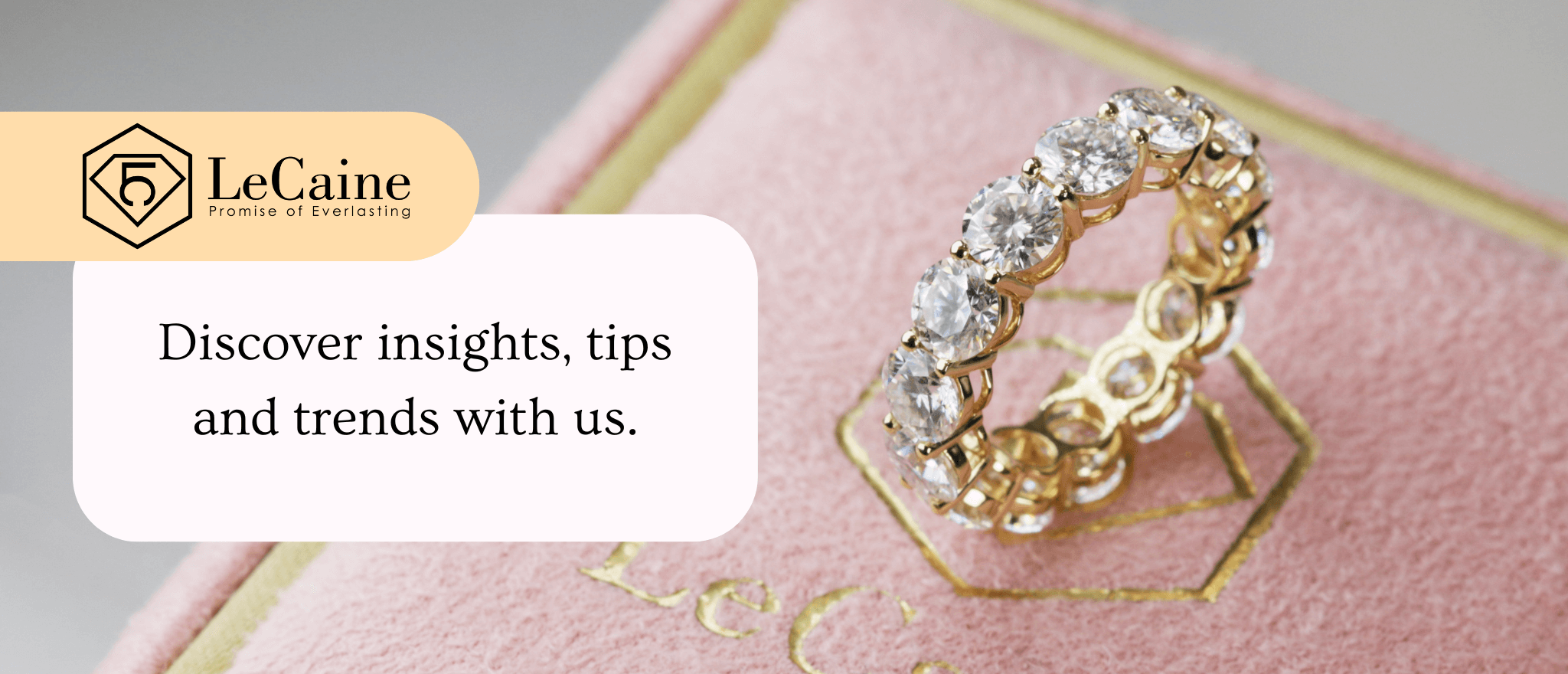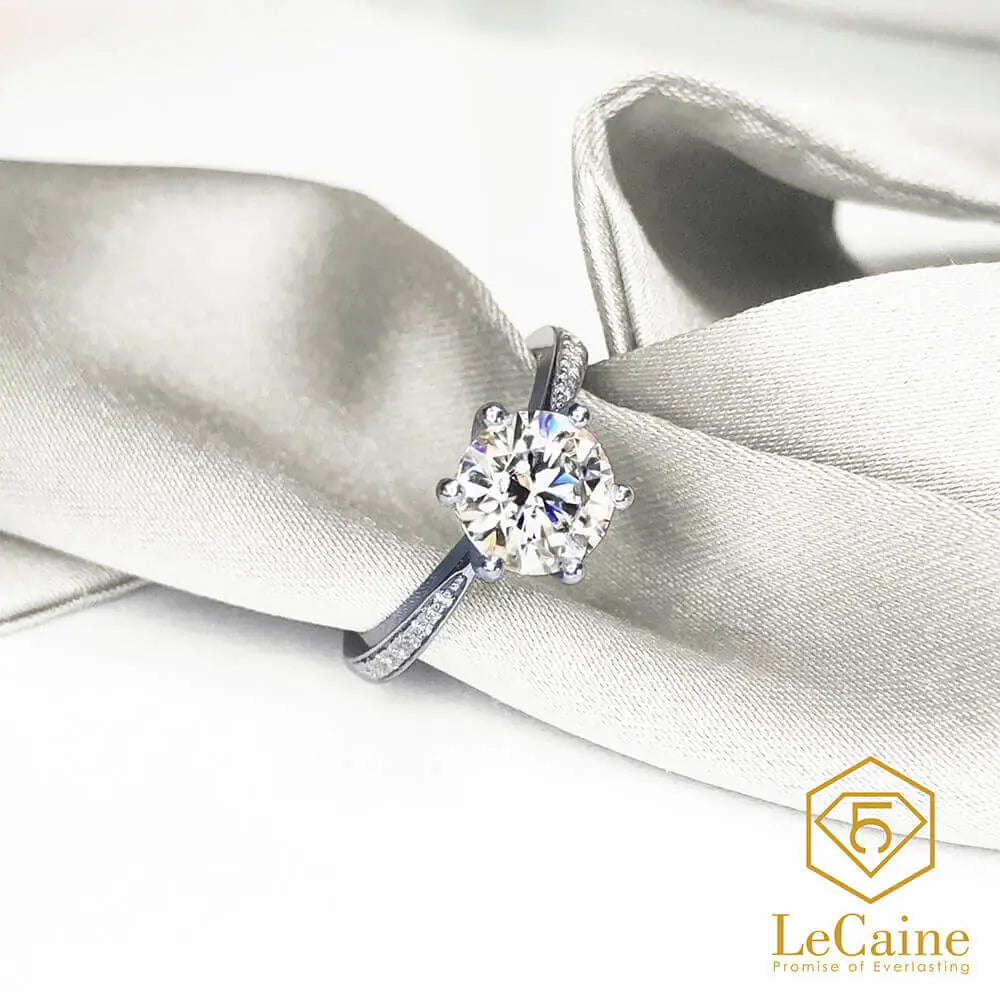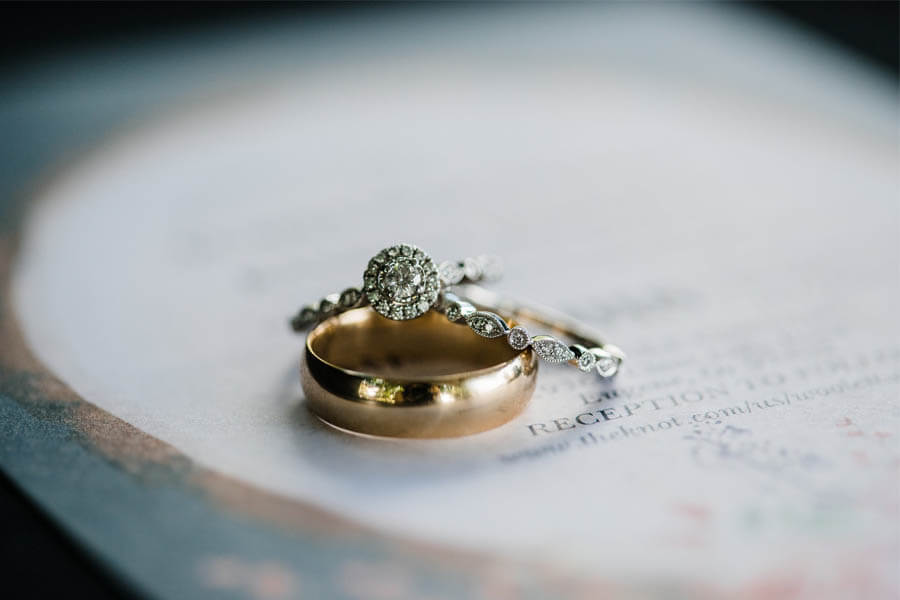
Blogs Tagged "" - LeCaine Gems
26
Jul

Lab Grown Diamond VS Moissanite: What Are The Differences? | with LeCaine Gems
Lab-made diamonds and Moissanite are two of the most popular alternatives to the natural diamond. While they no doubt each possess compelling traits that make them the ideal stone, there are a few factors that set them apart. This article compares these two diamond substitutes by sharing with you their key characteristics.
What are Moissanite and Lab Grown Diamonds?
Lab grown diamonds are essentially real diamonds that are developed in the laboratory, created through technology that is capable of replicating the formulation process of natural diamonds. Due to this controlled high temperatures and high pressure process, lab made diamonds are composed of the same chemical properties as the natural diamond: made from 100% carbon. On the other hand, Moissanite is a natural mineral that was first discovered by Henry Moissan in 1893. As natural moissanite is incredibly rare, lab-created moissanite is used in jewellery instead. Moissanite is composed of 50% carbon and 50% silicate.
Defining Characteristics of Moissanite and Lab Grown Diamonds:
1. Conflict-free, Ethically Sourced & Sustainable
As both gemstones are created in a lab environment, they exert a substantially lower impact on the environment as compared to the natural diamonds, which are derived through the means of mining.
2. Stone Cut and Shape
Lab created gemstones allow for a greater versatility when it comes to the cuts and shapes as compared to natural diamonds which are constrained by its intrinsic shape. As such, these two diamond alternatives certainly provide a greater flexibility in terms of stone cut and shape, to accommodate your jewellery preferences. Likewise, you may obtain them in the classic round brilliant cut, or in fancy cuts.
Featuring LeCaine Gem’s portfolio of lab-created gemstones of Lab Grown Diamond and Moissanite rings:
3. Colour and Clarity
Both Moissanite and Lab Grown Diamond abide by a colour grading scheme that is similar to that of the Natural Diamond.
Generally, the ‘D’ ‘E’ ‘F’ grades, being closer to white diamonds, command higher prices. As you go down the alphabetical order towards ‘G’ or ‘J’, the colour of the diamond is seen to be slightly more yellow.
As the two gemstones are created in a lab setting, the colour of the gemstones can be controlled. This explains why coloured moissanite and lab-grown diamonds are increasingly popular options to natural gemstones.
At LeCaine Gems, we deliver the quality you deserve by using the best stone cuts, colour and clarity for our gemstones. Adhering to the highest standards, our Moissanite and Lab Grown Diamonds are available in the best colour and clarity grades, ‘D’ and ‘VVS’ respectively. Based on individual preference, customers may also obtain them in ‘E’ and ‘F’ grades.
4. Hardness and Durability
As Lab Grown diamonds are made 100% the same in terms of its physical composition, it bears the same hardness index as the natural diamond, scoring 10/10 on the Mohs hardness scale. On the other hand, Moissanite ranks as the second hardest gemstone after the diamond, with a slightly lower hardness index of 9.25/10.
With that said, both moissanite and the lab-made diamond are incredibly durable, capable of withstanding the test of time. It is extremely rare that breakages or scratches will occur for both gemstones.
5. Sparkle and Brilliance
Due to a difference in their refractive index, the moissanite and lab-grown diamond exhibit a different sparkle. The Moissanite has a refractive index of 2.65, which enables it to emit a rainbow-like glow which is accentuated when viewed under the light. This allows it to radiate a sparkle and glow that is even more brilliant than the natural and lab-made diamonds.
At the same time, the lustre and brilliance of both moissanite and lab-made diamond remains intense and persists throughout the years without traces of dulling or cloudiness. Similar to the natural diamond, they do not lose their shine and sparkle over time.
How Lab Grown Diamond and Moissanite are created at LeCaine Gems:
As compared to the traditional way of obtaining the natural diamond, which takes years to be formed and cultivated deep in the earth’s core, the process of creating moissanite and lab-grown diamonds under lab conditions generates a lower degree of carbon footprint and requires a lesser period of time.
Lab Grown Diamonds: High Pressure High Temperature (HPHT) and Chemical Vapour Deposition (CVD) are two ways to create a lab-grown diamond, with both methods yielding the same results over the span of a few weeks.These processes ensure that the lab-grown diamond is made a hundred percent the same in terms of its physical properties to that of the natural diamond.
Moissanite: Through the use of technology, a block is created exactly like a stone. It is a highly electrolyte process, where the moissanite is formed with the components of carbon and carbon silicate. Once the polishing process is complete, the gemstone cutting sets in to attain the different facets and cuts.
Price comparison of Lab Grown Diamond and Moissanite:
Moissanite is a more affordable option as compared to Lab Grown Diamonds. Currently, the market price of the lab-grown diamond is estimated to be about 40-50% of the price of the natural diamond. While the moissanite costs a fraction of that at a significantly lower price, estimated to be about 10% of the natural diamond price.
While both of these diamond substitutes have been available for decades, the technology to create moissanite has been around a longer time, therefore accounting for its lower price. On the other hand, while the lab-grown diamond has seen an increase in popularity and demand in the last few years, the process of creating the lab-grown diamond is known to be costlier. Furthermore, given that lab-grown diamonds are perceived as identical to the diamond, this association likely spurs a marketing exception that draws a close link to the value of the natural diamond. As such, the lab-grown diamond has a price range that is closer to the diamond as compared to moissanite.
Given their similar physical traits, the amount of financial savings is a determining factor when choosing between the two. With moissanite, one can obtain a larger carat size stone at a significantly lower price as compared to the lab-grown and natural diamond.
Some commonly asked questions regarding Moissanite and Lab-grown Diamonds answered:
1. Can you tell Moissanite and Lab Grown Diamonds from Natural Diamonds?
Moissanite and lab grown diamonds bear an identical appearance to the natural diamond, making it difficult to differentiate between them for the layman. While they possess different physical characteristics, it would often require relevant equipment to ascertain these differences in refraction, sparkle and hardness.
2. Are Moissanite and Lab Grown diamonds certified?
Yes, Moissanite and Lab grown diamonds can be certified to guarantee the authenticity of the gemstones, as well as to provide you with the information regarding its Carat weight, Colour, Clarity and Cut.
At LeCaine Gems, our Moissanite is certified by third party labs and guaranteed by LeCaine Gems. Our Lab Grown Diamond is IGI certified. All our jewellery pieces are accompanied by an Authenticity Certificate and a Payment Receipt to verify the authenticity of the jewellery.
3. Should I choose Moissanite or Lab Grown diamond?
Both stones are conflict-free and sustainable. They serve as great options for those in search of a diamond alternative costing a fraction of the natural diamond price, while possessing similar physical characteristics. Moreover, to differentiate between these gemstones, it would often require a trained professional and specialised equipment to identify the differences. Depending on personal preference, a few key characteristics may make one more favourable than the other.
Choose Moissanite If:
- You want to maximise financial savings
- As Moissanite are priced more affordably than lab-grown diamonds, one will be able to acquire a larger carat size at a lower price as compared to the natural or the lab-grown diamond. This translates to the ability to opt for more elaborate designs composed of more gemstone details when one chooses the Moissanite.
Why choose Moissanite over the Diamond? Find out more about Moissanite vs Diamond
Choose Lab Grown Diamond If:
- You prefer a stone that is identical to the natural diamond in terms of chemical composition and physical appearance.
4. Do Moissanite and Lab Grown diamonds pass the Diamond tester?
Yes. Moissanite and Lab Grown diamonds are subjected to be tested positive by the Diamond tester. The diamond tester will measure the heat emitted from the gemstones, which indicates the hardness of the stone. Through this, one will be certain the gemstone they opt for is genuine.
5. Where can I buy jewellery with Moissanite and Lab Grown diamonds?
Here at LeCaine Gems! You will find a wide selection of custom-made jewellery pieces crafted with Moissanite and Lab-grown diamonds at reasonable pricing. We pride ourselves on our exquisite, fine jewelry collection, created with quality materials and excellent craftsmanship, of which you will find brilliant pieces that are ideal and worthy as heirloom pieces. Set with 18k Gold and Platinum, our Moissanite engagement rings are especially outstanding and valuable.
Our bespoke jewellery experience also offers customers the opportunity to create their desired jewellery based on their specific requirements. Contact us and allow us to be a part of your journey in achieving your ideal, custom-designed jewellery.
Looking to purchase or custom-design a ring? Check out our guides on Cuts and Shank Designs, and the Types Of Settings to complete your ideal ring.
16
Apr

How to Measure Your Ring Size
How to Measure Your Ring Size
Now that you have decided to purchase a beautiful Moissanite ring, you will need to determine the ring size. Do you use a USA size, Europe Size or Asia Size? There are, however very slight differences to the measurement guidelines used in various countries, we won't worry about it as long as you get the inner and outer measurements correctly.
Our team of experts at LeCaine Gems has put together this ring size guide to help make your ring a perfect fit!
Using a Thread, Paper & Ruler A simple and rather accurate way of measuring your ring size is by following these FIVE easy steps: 1) Loop a thread or string round the base of your finger. Be sure that it is not wound too tightly and is still able to go over your knuckle 2) Use a pen or a pencil to mark the point where the ends meet 3) Use a ruler to measure the thread or the string from the end to the mark 4) The total measurement (mm) is the circumference of your finger and can easily be corresponded with our ring chart below
5) To be extra accurate, get the inner diameter of the measured finger circumference
Measure an Existing Ring 1) Find a suitable ring that fits the intended finger properly
2) Measure the inside diameter of the ring
3) Correspond the diameter with our ring chart below
Circumference: The entire length around the outside of the ring
Diameter: The length from end to end inside the ring
International Ring Size Chart
And Don’t Forget….! For extra assurances, here are FOUR more useful tips you should know for your perfect ring: 1) Larger is Better. If you are still unsure of your ring size or if it falls between two sizes, always opt for the slightly larger size. It is easier to remove gold from a ring that is too big than to add gold to a ring that is too small.
2) That Time of the Day. All matter contract in cold and expand in the heat. So do our fingers! As a result, measurements taken in cold temperatures will differ from one taken under the hot sun. Likewise, a measurement is taken on a cool morning maybe a wee bit smaller than one taken on a bright sunny afternoon. Besides temperature, high and low humidity can also cause our fingers to swell and shrink.
3) Importance of Shank Size. Generally, rings with wide shanks will need to be slightly larger. This would allow it to fit snugly onto your finger. When the engagement ring and wedding ring are worn together, special consideration will need to be taken if they are wider than 4 mm or 5 mm. Our jewellers at LeCaine Gems will be at hand to assist you with this.
4) The Perfect Fit. Ideally the ring should slide in nicely on the finger, it must not become tight that it causes discomfort. Ensure that the ring is able to slide over your knuckle but not fall off accidentally while washing your hands or working.
I hope that you have found these tips useful on determining ring sizes and I’m sure that you will be able to find your perfect ring here at LeCaine Gems. Our friendly and helpful consultants are just a click away should you have more questions on ring sizes or on our wide array of beautiful Moissanite rings in D color and brilliant cuts. If you are shopping for other Moissanite jewellery that needs customisation, feel free to contact us with your enquiries. Happy Shopping!
-----------------------------
Complimentary Ring Size
CLICK HERE to discover the perfect fit for your ring with our complimentary ring size!
----------------------------
03
Mar

6 Ways to Secretly Find Out Her Ring Size
6 tips on how to find out her engagement ring size without her knowing.
 Skip to main content
Skip to main content

